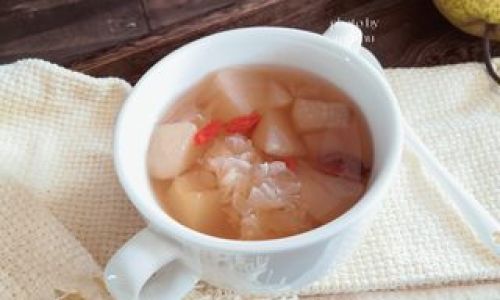Table of content
Pear soup, a beloved traditional beverage in many Asian cultures, is revered for its soothing qualities, delicate sweetness, and purported health benefits. Often made with ingredients like snow pears, rock sugar, goji berries, and sometimes medicinal herbs, this comforting drink is a staple during colder months or when seeking relief from dry throats and coughs. Yet, one question perplexes many home cooks: How long should you simmer pear soup to achieve the ideal balance of flavor, texture, and nutritional value? This article delves into the science and art of simmering pear soup, exploring the factors that influence cooking time, the consequences of over- or under-cooking, and expert tips to master this timeless recipe.
The Foundation of Pear Soup: Ingredients and Purpose
Before addressing simmering time, it is essential to understand the core components of pear soup. The star ingredient, the pear, varies by region—snow pears (Pyrus nivalis) are common in Chinese recipes for their juicy, grainy texture, while European varieties like Bartlett or Conference pears may be used elsewhere. Rock sugar, a less-refined cane sugar, adds subtle sweetness without overpowering the pear’s natural flavor. Supplementary ingredients like goji berries (rich in antioxidants), jujube dates (for earthy sweetness), or dried tangerine peel (for citrusy aroma) enhance both taste and health benefits.
The primary goals of simmering pear soup are threefold:
- Soften the pear to a melt-in-the-mouth consistency.
- Extract nutrients from the fruit and additional ingredients.
- Meld flavors into a harmonious, aromatic broth.
Achieving these outcomes hinges on precise simmering time—a variable dependent on heat intensity, pot material, and desired results.
The Impact of Simmering Time: A Delicate Balance
Simmering is a low-and-slow cooking method where liquid hovers just below boiling (around 185–205°F or 85–96°C). This gentle heat breaks down tough fibers in pears, releases sugars, and infuses the broth with aromatic compounds. However, the duration directly affects the soup’s final character:

Short Simmering (15–30 minutes)
- Pros: Retains the pear’s crispness and vibrant color; preserves heat-sensitive vitamins like vitamin C.
- Cons: Pears remain firm, lacking the silky texture many seek; flavors remain underdeveloped.
- Best for: Refreshing, lightly sweetened pear teas or quick preparations.
Moderate Simmering (30–60 minutes)
- Pros: Pears soften slightly, offering a pleasant give without disintegrating; flavors meld cohesively.
- Cons: May require occasional stirring to prevent sticking; slight nutrient loss occurs.
- Best for: Everyday consumption, balancing convenience and depth.
Long Simmering (1–2 hours or more)
- Pros: Pears dissolve into a velvety puree; broth becomes richly concentrated with nutrients and flavor.
- Cons: Overcooking risks bitterness (from caramelized sugars) or a murky appearance; vitamin degradation accelerates.
- Best for: Therapeutic purposes, such as soothing severe coughs or nourishing convalescents.
Factors Influencing Simmering Time
No single duration suits all pear soup recipes. Context matters:
-
Pear Variety and Size
- Firm pears (e.g., Asian sand pears) require longer simmering to soften.
- Smaller pear chunks cook faster than whole or halved fruits.
-
Pot Material and Heat Distribution
- Heavy-bottomed stainless steel pots retain heat evenly, reducing hotspots.
- Clay pots (common in traditional Chinese cooking) simmer gently but may extend cooking time due to slower heat conduction.
-
Additional Ingredients
- Dense additives like dried jujubes or lotus seeds add starch, thickening the broth and requiring longer cooking.
- Delicate herbs (e.g., chrysanthemum flowers) should be added late to avoid bitterness.
-
Altitude
At high elevations, water boils at lower temperatures, potentially extending simmering time.
Expert Guidelines for Perfect Pear Soup
Step 1: Preparation
- Peel or Not? Leaving the skin on preserves fiber but may impart a grassy taste. Peeling is recommended for a smoother broth.
- Core Removal: Always remove the core and seeds to eliminate bitterness.
- Cutting Style: Halve, quarter, or cube pears based on desired texture.
Step 2: Initial Boil
- Bring water (or stock) to a rolling boil before adding pears. This jumpstarts softening.
Step 3: Simmering Phase
- For Whole Pears: Simmer 45–60 minutes until translucent.
- For Chopped Pears: Simmer 30–45 minutes until tender but intact.
- For Pureed Soup: Simmer 1.5–2 hours, mashing periodically.
Step 4: Adding Sweeteners and Extras
- Add rock sugar, goji berries, or dates during the last 10–15 minutes to avoid overcooking.
Step 5: Final Touch
- Let the soup rest 5–10 minutes off-heat to allow flavors to settle.
Common Mistakes and How to Avoid Them
-
Over-Simmering
- Issue: Pears become mushy; broth turns cloudy.
- Fix: Monitor texture with a fork—pears should yield gently but not collapse.
-
Under-Simmering

- Issue: Pears taste raw; flavors remain disjointed.
- Fix: Extend cooking in 5-minute increments until desired softness is achieved.
-
Ignoring Heat Control
- Issue: High heat causes rapid evaporation, concentrating flavors unevenly.
- Fix: Maintain a steady, low simmer with occasional lid adjustments.
-
Adding Ingredients Prematurely
- Issue: Herbs like mint or ginger lose potency if simmered too long.
- Fix: Add delicate ingredients in the final 5 minutes.
Health Benefits and Nutritional Considerations
Pear soup’s popularity stems not only from its taste but also from its perceived health advantages:
- Hydration: The high water content of pears combats dryness.
- Vitamin Boost: Pears provide vitamin C, K, and copper (especially when skin is included).
- Soothing Effects: Traditional medicine attributes pear soup to cooling “heatiness” in the body, alleviating sore throats.
However, excessive simmering can degrade heat-sensitive nutrients. To maximize benefits:
- Use minimal sweeteners to avoid sugar spikes.
- Combine with ingredients like fresh lemon juice (for vitamin C retention) or chia seeds (for added fiber).
Cultural Variations and Modern Twists
Around the world, pear soup adapts to local tastes:
- Korean Baechu-doenjang Guk: Incorporates fermented soybean paste for umami depth.
- French Poire Belle-Hélène: Transforms pear soup into a dessert with vanilla and chocolate.
- Vegan Adaptations: Substitute rock sugar with coconut nectar or maple syrup.
Conclusion: The Alchemy of Time
The question of simmering time for pear soup has no universal answer—it is a dialogue between tradition and preference. Whether you seek the rustic charm of slightly al dente pear chunks or the luxurious decadence of a silken puree, patience and attention are your greatest allies. By understanding the interplay of ingredients, tools, and heat, you can transform a simple pot of water and fruit into a nourishing elixir that soothes the body and delights the senses.
In the end, the perfect pear soup is not measured in minutes alone, but in the harmony it brings to those who sip it. So, the next time you stand over a simmering pot, remember: time is not an enemy, but a collaborator in crafting a timeless comfort.




0 comments